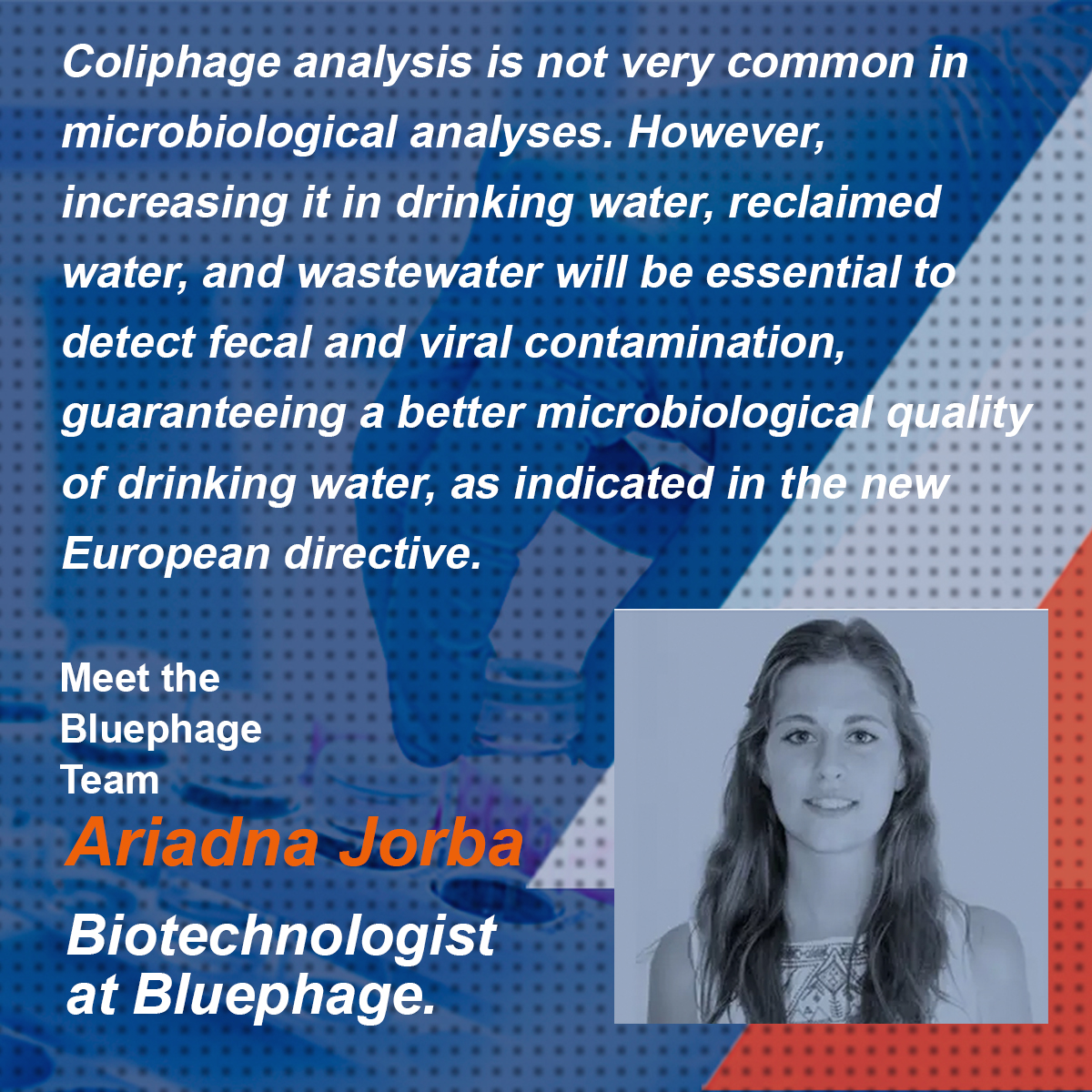BLOG | Bluephage
Coliphage analysis. Before or after the first coffee in the lab?

Interview with Ariadna Jorba, biotechnologist at Bluephage, to explain the advantages of working with Bluephage methods to alleviate the workload in the laboratory when implementing this new analysis required by the European Commission.
1. The new European directive on Drinking Water identifies somatic coliphages as new control parameters. If the source water has a presence of coliphages higher than 50 PFU/100 mL, the potabilization process must be controlled to ensure their elimination.
What is the challenge of updating laboratories for coliphage testing?
Currently, many laboratories are unfamiliar with coliphages, so undergoing this change and including them as new indicator parameters becomes a significant challenge: it will require specific staff training and, therefore, a significant investment of time to learn about the latest techniques and methodology of work.
For these analyses, it is necessary to make stocks of biological materials (host bacterial strain) to detect coliphages to be used as positive controls (type coliphage). It will be necessary to have prior knowledge to perform the correct calibration and thus ensure reliable results. Training will also be required based on other materials that are commonly used, such as media or culture plates, among others.
2. A recent survey conducted by Bluephage on social media found that 60% of microbiological water testing laboratories test between 40 and 60 tests per month for E. coli, and 75% test less than 10 tests per month for coliphages. 70% of the participants tested drinking water, 20% tested reclaimed water, and 10% tested wastewater.
Given these statistics, what strategies, targets, and metrics should laboratories follow to ensure drinking water quality while implementing a circular economy of water resources?
As this survey shows, the use of coliphages is shallow in microbiological analyses. It is essential to increase the number of analyses using coliphages as viral indicators to guarantee a better microbiological quality of drinking water, as indicated in the European directive. It would be interesting to increase the frequency of analysis with them and do so in both reclaimed water and wastewater.
In this way, if all types of water are analyzed, we could begin to treat and ensure its quality for regeneration and thus be able to reuse and make the most of all types of water since it is a scarce and indispensable resource.
Bluephage kits are an excellent alternative to conventional methods of coliphage analysis thanks to their main advantages: their ease of use, since they are composed of all the necessary elements, and come ready to use without having to perform any step beforehand. Thus, they make it possible to reduce the time invested in the analysis, being able to analyze more samples at the same time.
3. Climate change, unsustainable population, and urban growth demand fast, efficient, and cost-effective solutions to safeguard the population’s health. Bluephage Easy and Rapid kits are all-in-ones, ready-to-use kits.
What other improvements and advantages do these kits have over the standard ISO and US-EPA methods?
These kits are straightforward to use, and no specific experience or skills are required, as well as being an expert in coliphages. It will be essential, however, to follow the instructions provided carefully.
One of the significant advantages is that it is not necessary to carry out the concentration step (filtration, flocculation, etc.), as indicated by ISO if samples of 100 ml volume are analyzed. The BP1604 kit allows the analysis of this volume directly, thus reducing time and sample handling and consequently decreasing the probability of contamination and losses of the microorganism. It will enable us to analyze in a straightforward and shorter time.
5. Coliphages should be tested routinely before or after the first coffee in the laboratory.
How is the control of coliphages applied in routine water analysis at water supply points and areas?
Samples are collected periodically at the different points of the water network. These samples are processed by analysis with coliphages as indicators of fecal and viral contamination. These analyses are crucial to ensure good water quality in the supply areas.
One of the advantages of coliphages, as viruses, is that they remain in the environment longer than bacteria and can therefore be analyzed in samples that were not collected on the same day.
What other advantages do coliphages offer as fecal and viral water quality indicators, and what do they represent for laboratory technicians?
Because coliphages can remain in the environment longer than bacteria, their resistance is similar to that of pathogenic viruses, which is already a significant advantage over bacterial indicators.
Coliphages are excellent indicators, as they are specific for fecal contamination and are found in high concentrations in water contaminated with fecal matter. In addition, they are bacteriophages, so their structure, morphology, and behavior are very similar to that of human viruses, and therefore their presence in water is directly related to the presence of pathogenic viruses.
It is very grateful to work with coliphages as they are easy to maintain, detect and quantify. The methods and techniques used are simple, fast, and affordable. In addition, as you mentioned, thanks to their resistance, they allowed the sample to be analyzed later, which favors a better organization of personnel and material necessary for the analysis.



